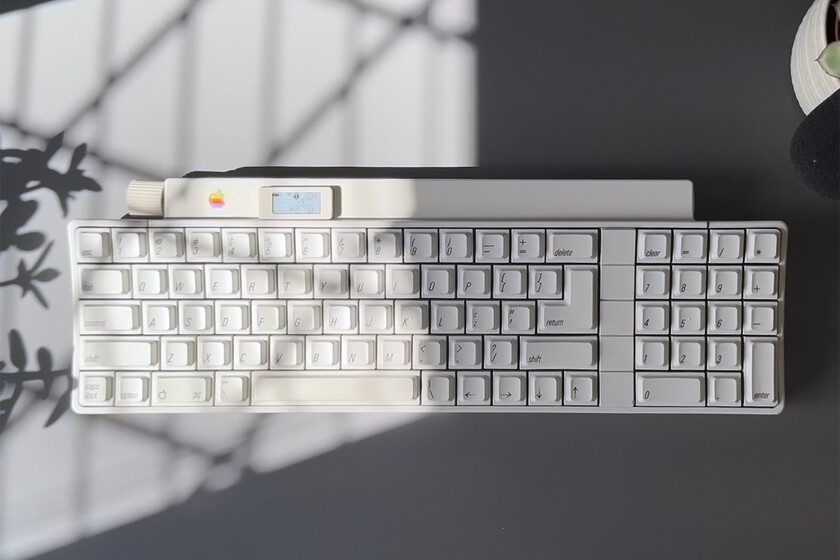It’s no secret that many people love retro keyboards. This reality has led some manufacturers to launch replicas of iconic peripherals such as the IBM Model F. Some modders, for their part, are reviving some decades-old models. This is the case of Matt Chesters, who can now enjoy a Apple Desktop Bus Keyboard released in 1986 on your current Mac.
But starting to use it was not as simple as plugging it into your computer and that’s it. Instead, he was forced to go through a long process. It all started with restoring the keyboard. Chesters completely strips the device and cleaned each of the keys with water and a brush. He did the same with the casing, but it was not enough to eliminate the yellowish color that had acquired over the years.
A 1986 wireless keyboard
The author of the project says that he tried to recover the original color of the peripheral manufactured in Japan through a process that consists of bathe the keyboard in H2O2 and expose it to sunlight. The technique gave a very good result and the appearance of the case changed noticeably. The next step was to analyze the printed circuit board to add the necessary components to make it wireless. A challenging task.
The idea of using the peripheral wirelessly would not only be due to a practical need. This type of keyboard communicated with the Apple IIGS through a proprietary port, specifically, the Apple Desktop Bus Keyboard. Instead of using some type of adapter, Chesters decided to go for wireless technology. Now, to achieve this I had to add a microcontroller with a battery.
The aforementioned component was customized with the ZMK open source firmware. After some testing, this enthusiast found the necessary settings so that the controller could transmit the correct keystrokes to your Mac mini. An interesting addition was a small LDC screen. Your mission? Check battery level and Bluetooth connectivity at a glance.
Chesters, I want to get the most out of the project. It also added a volume control wheel and a USB-C port to charge the battery. The good news is that Project details are openly available on GitHub. This opens the door for anyone else to use this information to adapt a keyboard of the same model (or with similar characteristics).
Imgenes | Matt Chesters
In Xataka | I used the holidays to revive a keyboard that had been in an attic for more than 25 years: an IBM Model M as mythical as it was scandalous.

